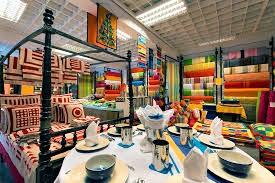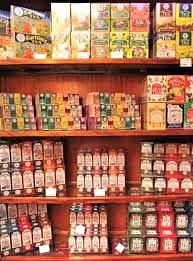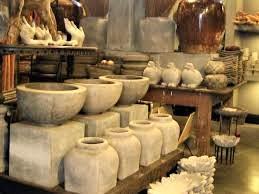Itinerary
We arrive at Colombo International Airport, Katunayake at midnight. Welcome by your guide and transfer to Jetwing Blue Hotel Negombo.
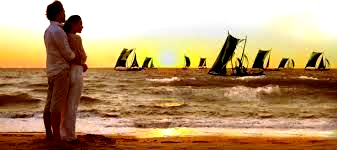
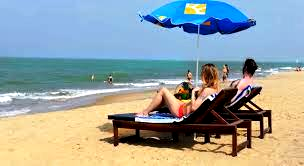


After breakfast we visit the Negombo area on a sightseeing tour before proceeding to Habarana.
Negombo
Negombo is a former Portuguese and Dutch colony and is one of the main fishing harbours of the Island. A morning visit to the lagoon- mouth will thrill you to the limit when ancient catamarans and modern motorboats return cheek by jowl to the shore after competing for their nights’ catch. The ensuring chaos of sorting, buying and selling with torrent of bargaining will surely leave a visitor spellbound by the coarse verbal exchanges not to mention its heart-stopping coastal character. You could also visit the vast beach of the cape they use for drying fish if only if you could bear the putrid stench. But it’s rather educational as essential Negombo! In addition to the prominent activities at the lagoon-mouth and the shoreline, Negombo boasts of some of the finest Catholic Churches in the Island. Alluringly, most date back to the 18th and 19th centuries with a couple to times even before. You will also be driving along the tourist colony where hotels, guest houses, restaurants, pubs, discos and sea-food outlets dress up the roadside making the famed colony full of great vibes.
Upon passing Dambulla, the somnolent dry zone landscape takes over to remain so until you reach your destination. Some stretches of forests you pass are notably infested with wild elephants and you’ll come across faming hamlets and little townships every now and then as you travel along. We will stop at suitable locations for restrooms and snacks.



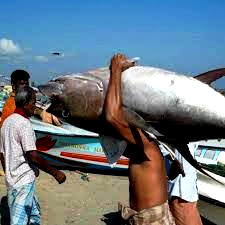
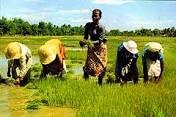
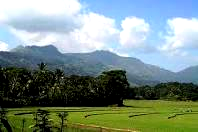

During your 4 nights stay at Cinnamon Lodge Hotel, you will be covering the following archaeological sites in addition to a jeep safari you will do to watch the wild elephants!
POLONNARUWA
Visit the ruined medieval city of the 12th century; a world heritage site and the second capital of Sri Lanka and commence sight- seeing. The first section that is considered the main area; a maze of ruins, starts from the King’s palace, his court and the bathing complex and then extends all the way to the Thuparama image house, Lord Shiva Hindu shrine, classic quadrangle complex, giant rock inscription, seven story structure and the Tooth relic chambers. Most ruins speak volumes of the South Indian influence at the time. After sight- seeing, commence a long but very interesting hike from that area to the Alahana pirivena(monastery complex) site during which time you can visit the Lankatilleke image house, towering Rankot pagoda and the Kiri pagoda. En route you could deviate looking at the sign boards to cover Pabulu Vehera, Menik Vehera and Shiva shrine no 2; all interesting little pieces of art connecting one to another. After wards, leave for the Galvihara statues; probably the most delicate rock carvings found anywhere in Sri Lanka that has an immaculate finish to it. Then it’s your turn to visit the Lotus Pond; yet another masterpiece of a rock carving and Thivanka image house where original 12th century wall paintings can be viewed. A visit to the colonial rest house built picturesquely on the bund of the lake will allow you to relax and enjoy refreshments. It is where the Queen of England had lunched twice.


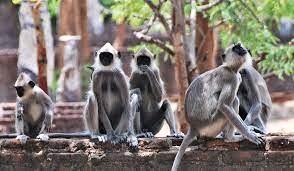
Thereafter, visit the second section situated right behind the rest house abutting the lake; the area associated with King Nissanka’s reign in the 13th century. You could cover the remains of his palace, court with the famous stone carving of the lion, his cozy summer house built in an island of the lake and the charming bathing pond complex, all timeless medieval rockwork. Afterwards, proceed to the last section; that is the King’s statue considered to be yet another important rock carving and the ancient library (potgul vehera), all found built adjacent to the bund of the great lake the King built to irrigate his Kingdom. You’ll find two kinds of monkeys; grey languor and torque, roaming freely among the ruins, at times in large troops; an important subject the Smithsonian covered among the ruins in one of their outstanding research projects.
We can have refreshments and then proceed to Minneriya National Park on a jeep safari to watch wild elephants.
MINNERIYA NATIONAL PARK
Minneriya National Park is situated not too far away from your base at Habarana. Minneriya is an area that environs two large man-made lakes built in the 4th century. After the end of rainy season in January, large herds of elephant migrate from the nearby forests to the lakes to drink and feed on the emerging shoots of fresh grass growing freely on the exposed lakebed. This becomes a magnificent migratory pattern and a much sought-after tourist attraction, more so at the height of the drought in August, when over 300 elephants in large herds leave the edge of the forest and inch along toward the only sheets of water left. It is usually before the fall of dusk. One could in fact close-in on them to a touchable distance should the wind be in one’s favour.
In addition, the park has leopards and sloth bear though sightings are rare due their nocturnal habits. Deer, sambhur(elk), crocodile, jackal, mongoose, gray langur and torque monkey, endemic star tortoise and porcupine sightings are more common. The park is home for numerous species of birds, aquatic and otherwise. The large pelicans, colourful painted storks, pied Parson’s storks, and bicolour open bill storks steal the show in size among a lot. There are many types of eagles too including the majestic white bellied sea eagle.
On this day we cover the Sigiriya Rock Fortress and Dambulla caves before engaging in a village tour in the late afternoon.
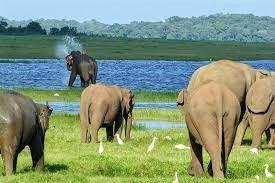
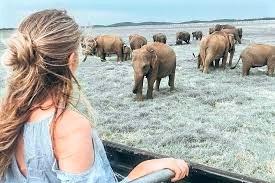
SIGIRIYA
The spectacular rock fortress of Sigiriya belongs to the 5th century. It’s yet another world heritage site. Different theories of its creation are published by eminent archaeologists. Some say that once a Kingdom of a King was later used by monks as a monastery complex.
Whichever the theory, the 640-foot gigantic rock striking into the clouds from the arid flat plains by itself presents an inscrutable mystery to most. As you approach the great fortress, firstly you’ll get to brave the deep moat built right around the rock that had been infested with man-eating crocodiles during the King’s time. The pleasure garden of the King comes next in where during the rainy season, water fountains still emit a substantial spray most astonishingly. After you pass the classic rock garden and stroll through stunning giant boulders that may have held many impressive structures together as guard points in ancient times, you’ll proceed towards the all-important cavity in the rock located halfway up where the world-famous frescoes of the beautiful maidens are found, painted so miraculously on the very rock-wall in natural colours.
At certain times of the year, you could watch nesting peregrine falcons in some of the other cavities on the rock-wall and even a rare Indian blue rock thrush may show-up at the summit.
Afterwards, proceed to the gigantic Lions paw made of bricks, climbing further along the incredible mirror wall on which the yesteryear admirers of the paintings wrote poetic eulogies in quaint, early Sinhalese characters, delineating what they saw. The lines are readable only to the archaeologists as of now.
A further adventurous climb from the Lion’s paw will take you to the flat summit of the rock to enjoy one of the most beautiful views in the Island, that of the ever-green tree canopy of the Island’s dry zone that is seen dotted with ancient man-made lakes. The immediate area surrounding the rock is a declared sanctuary in where wild elephants and other game still roam. On the peak you will also come across the King’s court, remains of his living quarters and his pool complex, presently opening out to the heavens in the absence of any shelter! The mystique fortress which is sadly dead now leaves its wonderful legacy for you to visualize its heyday with ease.

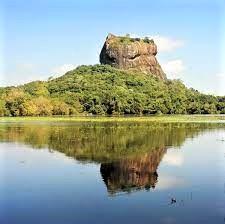
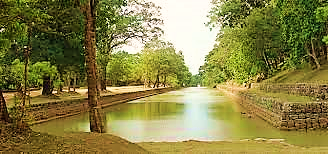
PIDURANGALA ROCK
Climb the Pidurangala rock where there is a living hermitage to enjoy one of the most scenic views in which the Sigiriya rock, rising from the green wilderness at an unusual tangent, features very prominently. The ancient monastery complex dates to the first century and you will get to meet meditating monks at their breakfast at the foothill. Climbing through great boulders and jungle is a perfect adventure for both the young and old.
DAMBULLA
Dambulla cave temple is situated not too far from Sigiriya; yet another world heritage site where in five pre-historic caves you’ll find not only fantastic colourful rock-wall drawings, mostly of Buddha and events of his life, but some outstanding sculpture work as well. Some do date back to the distant 1st century. The paintings are perhaps second only to the ones at Ajantha and Ellora in Aurangabad in India. Eminent painters who visit the caves as an essential part of their itinerary are often mesmerized by the creation of such rich colours, so soothing to the eye, so early in civilization, and express their wonderment as to how the treasured paintings had survived all these centuries in their original form!
VILLAGE TOUR
You can do a fantastic village tour where you will be taken on traditional bullock-carts to a remote village bordering an ancient tank. The surrounding areas are infested with wild elephants and the brimming lake surface gets dressed-up in blooming water lilies and lotuses after the rainy season. Numerous aquatic birds will scuttle through the lake herbage and cormorants will form artistic formations in the skies above. You will then board boats (in life jackets of course) and boatmen will navigate the boats towards distant seasonal chena cultivations on the opposite bank where you will be entertained with refreshments. A cooking demonstration by the native villagers is on the cards and the guests too could take part on an educational mission and should the guests wish to have a meal, it will be served on a tree house built to chase the wild animals away. Fresh tank fish fried is customary. Ones who fancy alcoholic beverages can try-out local arrack cocktails served in coconut shells!
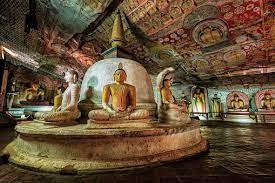
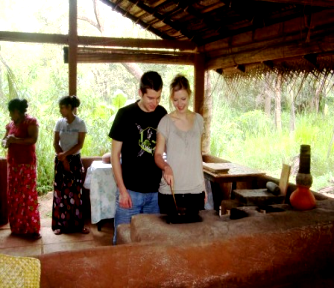
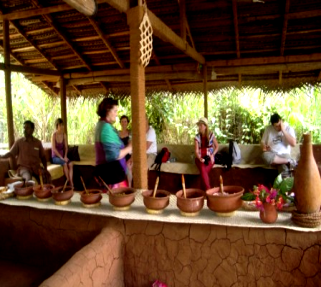
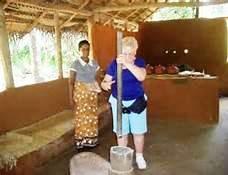
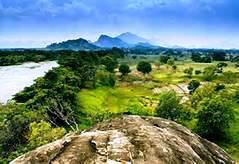
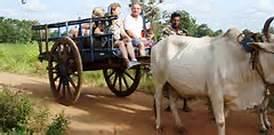
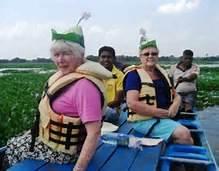
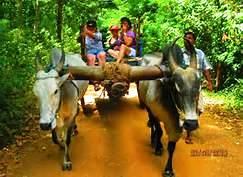
The Cart Safari will allow the guests to study the very rural lifestyle and how the folks grapple with the threats posed by not only wild elephants and snakes but harsh climatic conditions.
On this day we do an excursion to Anuradhapura. It is only a 1.5-hour drive.
ANURADHAPURA
Anuradhapura is the first recorded capital of Sri Lanka from 3BC to 12AD. Visit the monuments that speak volumes of a great civilization that flourished in this land before anywhere else.
Visit the Ruwanweli Maha Thupa and the Sri Maha Bodhi tree complex; perhaps the oldest recorded tree in the world and one of the most important places of worship for Buddhists. You could also saunter from Thuparama; the first stupa ever to be built in the Island in 3BC, to the Bodhi tree on a paved path passing the Maha Thupa of 2BC on the right and the magnificent Brazen Palace on the left, once said to have had seven stories with a golden roof to house thousands of residing monks.
The ruins of Anuradhapura you see now are mostly the restoration work of famous King Parakramabahu who reigned from the second capital Polonnaruwa in the 12th century. He visited the sacred sites of Anuradhapura left in the wilderness; having forced to vacate the great city that was set ablaze by the invaders from South India in the 10th century. Also visit the giant Ath Pokuna(elephant pond); a bathing pool meant for the monks which is five times larger than an Olympic size pool and the classic twin ponds also meant for the usage of monks. Then, you’ll visit the remains of the rockwork of vast monastery complexes of Abhyagiriya dating back to the 1st century and Jethawanaramaya of the 4th century; restoration of both now completed to absolute wonderment. These stone structures and amazing rock carvings are found scattered over acres of a well-maintained forest garden which is no less than a landscaping marvel. The priceless artifacts include the gallant guard stone and the elegant moonstone. A hike through the ruins is recommended to absorb the real feeling of a highly advanced civilization that flourished in the island two thousand years ago. In addition, visit the captivating Samadhi Buddha statue, subject for many a poet and the ancient temple at Isurumuniya from where you could do yet another side trip along the scenic tank-bund to the Royal Prince’s pleasure gardens ‘Ranmasu Uyana’ of 2 BC. It will be an unforgettable experience. Eminent Archaeologists say Anuradhapura with such large pagodas that are perhaps second only to a few pyramids in size could have been larger than the greater Rome in its heyday!
In Anuradhapura, you will also get to listen to a very short sermon by a Buddhist monk in English on the core of Buddhism and its practise. If the circumstances and timings are right, you will get to participate at preparation of food for an alms giving (dane) ceremony either to monks or as a ritual to Buddha’s relics at the Maha Thupa ( Ruwanweli Seya).
If the time permits, a visit to the Anuradhapura Museum is recommended which allows a tourist keen on archaeology and Buddhism ample study material.
Breakfast dinner and 4 overnights at Cinnamon Lodge Hotel, Habarana

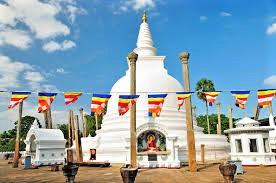
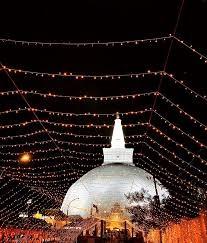
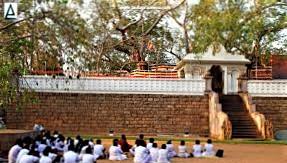
We travel 3 hours to reach Kandy. En route we will engage in an educational tour of a spice garden. It is possible to get involved with a cooking demonstration too.
SPICE GARDEN
Sri Lanka had been famous for its spices since the medieval times and is considered as one of the main reasons for the Europeans to conquer the Island. It was also the reason for the Arabs to become interested in her from the 14th century onwards. The most interesting feature would be the opportunity you’ll get to identify the real plants of spices you are familiar with in your day-to-day life. A qualified guide will do a conducted tour of the garden and may add a presentation of the herbal products.
A cooking demonstration is on the cards at the Spice Garden in which you could participate as a study. A traditional Sri Lankan curry will be prepared by the staff with your assistance with approval for a footage. It will be done at leisure amidst lush greenery of the garden.
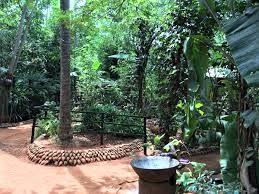


Upon reaching Kandy we check-in to Cinnamon Citadel Hotel for 2 nights stay.
KANDY
During your stay you could explore the quaint city of Kandy, the last Kingdom. Visit the Temple of the sacred Tooth Relic; the most important place of worship for Buddhists world-over. At the Tooth Temple you’ll get to participate in a colourful ceremony to the tune of the Eastern tom toms which would be full of timeless culture and age-old rituals.
You’ll also visit the upper lake area to catch a bird’s view of this fascinating lake city and the great temple cluster which is declared as a world heritage site now. A visit to the botanical gardens the following morning will thrill you for it is the only one of its kind in this part of the world. Being the pleasure gardens of the Queen once and found hugging a meandering river, you could saunter under the fine shadow of great trees for hours passing manicured lawns and lovely flowering shrubs in wooded groves. A visit to the famous orchid house is a must for orchid lovers.
Evening, one could walk around the Kandy Lake and along its paved paths with the great Temple in the backdrop, enjoying the cool breeze that flows freely from the distant hills. Kandy being the last Kingdom offer valuable souvenirs in handicraft and gems. Sri Lanka is the only country in the world in which world-famous blue sapphires are found in its pure original form.
Dinner and overnight at Cinnamon Citadel Hotel, Kandy 2 nights.

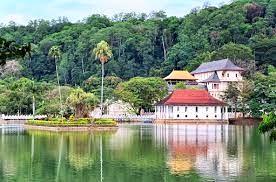
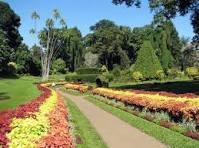
On this day we travel to Nuwara Eliya on a 3-hour journey.
The drive is one of the most scenic in the island and the road winds as you ascend to an elevation of 6,500 feet above sea level. During the drive you will be passing some great tea plantations, mist shrouded mountain peaks, gushing waterfalls cascading into limpid rock pools, lush rain forests in which runs pellucid brooks, and a man-made reservoir found in a deep valley that produce hydroelectricity for the Islanders. Enroute you can stop at the Labukelle Tea Factory where you will get to learn about the process of drying tea leaves. A walk among the fine tea bushes systematically laid on mountain slopes with its fine aroma will thrill you to the limit.
In the evening we can do a city tour of Nuwara Eliya at leisure.
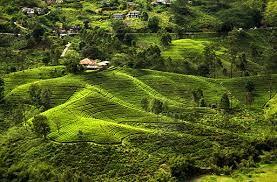


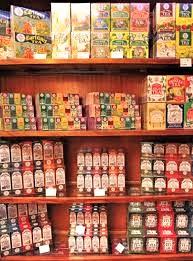
NUWARA ELIYA
In the month of April, English flowers bloom in abundance in the immaculately maintained gardens of Nuwara Eliya. You’ll also get to identify most of the hill country birds on a stroll in Victoria Park. Nuwara Eliya; the capital of tea country resembles a small Scottish town with its classic Victorian and Tudor style buildings. The landscape is ably backed by a salubrious climate. British built this town less than two hundred years ago as a spot of entertainment for their planters. They built a great 18-hole golf course, a grand horse racing track, irresistible club houses with wooden dancing floors, sprawling tennis courts, lovely little villas, and a beautiful lake in the middle of all which they stocked with trout so that planter families could come on horseback from nearby estates to spend the weekends in style. For most at the time, the captivating township may have been closest to their homes far away.
Dinner and overnight at St Andrews Hotel, Nuwara Eliya.

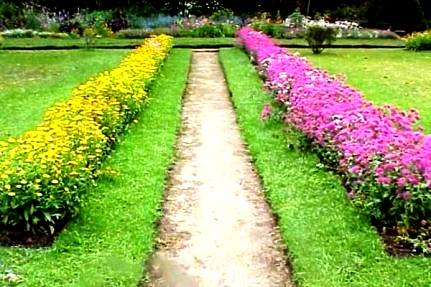
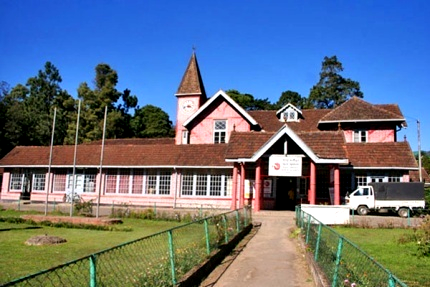
We travel by train from Nuwara Eliya to Ella. It is one of the most beautiful train journeys to chug along in Asia. The ride is mainly through tea plantations and upon passing Ambewela the train crosses untouched temperate forests spared by clearings for tea plantations a century ago. We climb from 6000 feet above sea level at NE to reach 7000 feet at wild Pattipola only to descend another 4000 to be at Ella which is 3500.



Day 09 to Day 11 – at Mountain Heavens, Ella.
Your chauffeur will meet the train and transfer you to one of the best resorts in Ella which is also the highest point that enjoys the best of views!
Ella is the location where through two gigantic rock boulders you could watch the glittering waters of the Indian Ocean 60 miles away thus presenting a magical view of unspoiled nature. The British who ruled the island for 150 years spotted this most amazing wonder of nature and built a rest house at Ella over hundred years ago. Part of that charming building is still preserved for future generations to discern the splendour of those grand colonial times. Their beautiful garden, where colourful roses still bloom is only a little this side of heaven. You could also stop at the majestic Rawana Ella Falls that cascade down a long way along a rocky precipice into a deep pool.
Ella Gap…..
During of stay, we explore the scenic beauty of Ella on foot on a couple of famous hikes. The most famous and the most scenic hike is the mini–Adam’s Peak hike which offers breath-taking views of mountain vistas. It is equally loved by families with children and back-packers.
Also, if you missed-out the cooking demonstration at the Spice Garden, you could get involved with one at Ella since you have ample time.
Dinner and overnight at Mountain Heavens Hotel, Ella


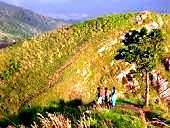
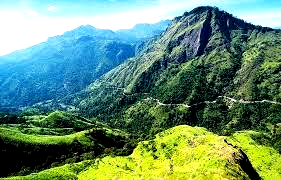
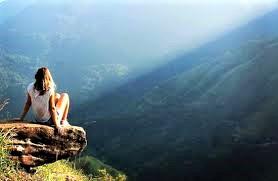
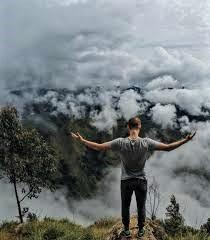
We travel to Hikkaduwa to spend our 3 nights beach holiday at one of the most sought-after beaches in the world.
Upon arrival, we check into Hikka Tranz by Cinnamon.
– 3 nights at Hikkaduwa
Or if you wish to stay in an enchanting boutique hotel, suggest Geoffrey Bawa designed Club Villa Bentota https://www.clubvillabentota.com/ for the 3 nights from where you will do the same sightseeing tours mentioned.
We explore the Southern coast to our hearts’ content.
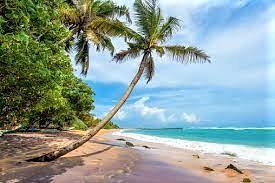
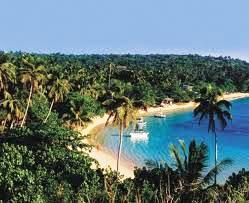
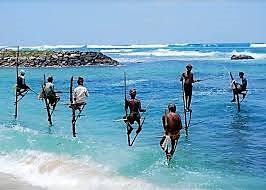
GALLE
At Galle you’ll find the 17th century Dutch Fort where many a sea battle had taken place for maritime supremacy in the 18th century between the residing Dutch and the invading English Navy. In a vast isthmus protected by a massive rock wall built around it, you would come across grand churches, great Dutch buildings, ancient garrisons and cannon positions, maze of court yards, paved assembling positions all well connected by cobblestone streets and then a lovely maritime museum, everything restored to its former glory after the devastating Tsunami in 2004. Most of it was generously funded by the Dutch Government. The British built a classic light house in 1848, and you could saunter from the light house to the entrance of the Fort along a paved path on the towering Fort-wall enjoying the view of the rocky sea beach and its aquamarine waters on one side and the great Fort on the other. There is the famous Amangalle resort; an exclusive up market property built during the Dutch times, famous for its cosy yesteryear ambiance. It was formally known as the NOH, and you could visit the charming hotel for a cup of tea or for snacks if you wish to go back to the 18th century world that would surely be likely to unfold before you at Amangalla.
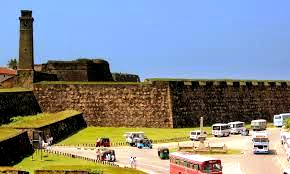
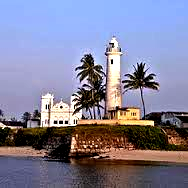
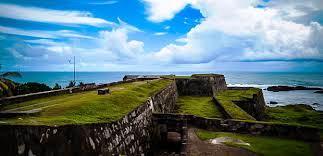
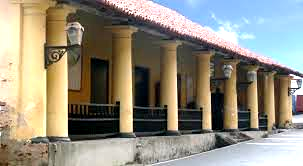
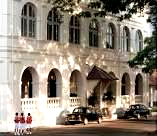
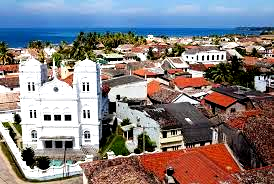
River Cruise
At Balapitiya nearby, you could also do a river cruise to not only to enjoy the unparallel scenic beauty upstream but study the simple lifestyles of rural Sri Lankan folks. You will be propelled many miles along the lovely winding river into the areas where alluring mangroves and tropical rain forests hug the evergreen riverbank. The untouched solitude is full of chirping birds and other interesting creatures of the wilds and the study of lifestyles will focus on the way the inhabitants manage their day-to-day activities grappling with the flowing river, their only mode of transport. You could also visit a 200-year-old temple, picturesquely built on a rocky bank of the lake. The setting sun at this point with its incredible panorama will surely steal your heart.

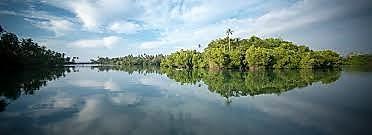
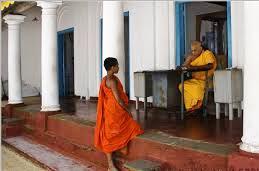
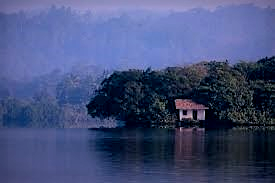
It will be an opportunity to mingle with the rural folks of back of beyond territories.
Turtle hatchery
You could also visit a turtle hatchery to study how well turtles are preserved in Sri Lanka. You will be very happy at the noble efforts of the hatchery owners who not only protect the four rare species in an exemplary way but the way they educate the Sri Lankan public on the importance of their task.
Geoffrey Bawa Estate Lunuganga in Bentota.
This is a masterpiece creation of world-renowned Sri Lankan architect Geoffrey Bawa. Set amidst a vast garden of many lush acres overlooking a pristine lake, the structures of an elegant home, tasteful accommodation, great decor and an infinite pool takes one’s breath away in awe instantly. What steals everything else is the wonderful landscaping of Lunuganga gardens, the way Mr Bawa has managed to preserve untouched nature of the region and the way he has secured best views of the lake through wilderness from numerous hillocks of the property to soothe the eye of a visitor. He has used the splendour of renaissance period and the historical landscaping techniques of Italians, merging them exquisitely with recorded Sri Lankan tending patterns of the King’s time. An hours’ tour is conducted by professional guides daily which will be an unforgettable experience to a visiting tourist blessed with refined taste. Lunuganga is just a few kilometres inland from the coast.
3 nights Half Board at Hikka Tranz by Cinnamon at Hikkaduwa or boutique hotel Club Villa Bentota
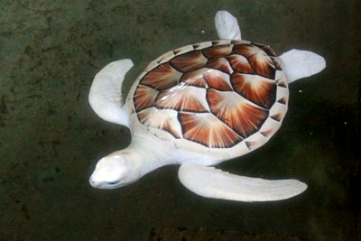
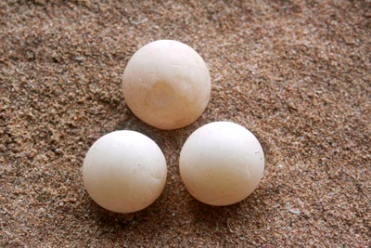
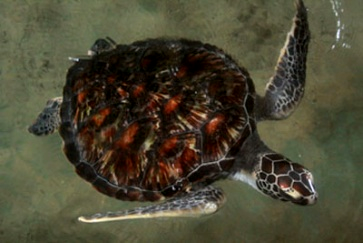

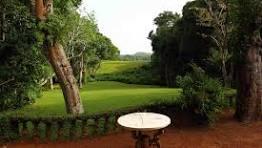
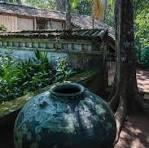
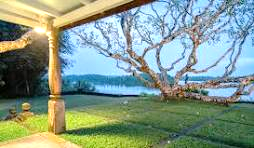
In the morning transfer to Cinnamon Grand Hotel, Colombo on the express way.
We do a brief sightseeing tour of Colombo
COLOMBO
Explore the city of Colombo visiting the lovely Galle Face Green; the great British Built lawn overlooking the waterfront of the Indian Ocean, Classic old parliament and the modern-day skyline of the city integrating into one another so incredibly.
It is a city where great colonial era buildings are still left intact. Most are restored and immaculately maintained to stand side by side with the modern in the most elegant manner. This outlook in fact is not seen so prominently in any other city in Asia. It no doubt speaks volumes of the glorious past attached to the city of Colombo from the 15th century onwards when the ownership of the city changed hands from the King to the Portuguese and then to the Dutch and finally to the English, until the Island became a sovereign state once again in 1948. All Europeans left their own footprints in the city and more importantly their values among its people that made the Islanders a great Nation and their capital so pleasingly special. You will get to visit the 17th century Dutch Wolfendhal church, The Museum, the Town Hall and The Victoria Park built by the British, a lovely temple of Buddha in a lake setting and a colourful Hindu shrine. The latest attraction is the tastefully salvaged 400-year-old Dutch Hospital in Colombo Fort which is now renovated to its former glory as if by a magical wonder. You will find lively pubs, ritzy restaurants offering choice cuisines, coffee and tea houses, up-market spas, and even ample shopping, all within the unparallel charm of the quaint hospital complex. The area with classic court yards, maze of alluring terraces with seating resembles European thoroughfares of the colonial times. The latest addition to the city is the newly renovated racecourse which is now an international class rugby grounds where the mammoth grandstand feature great up-market shopping with quality eating-houses. It is no doubt that this is the oldest colonial grandstand in Asia.
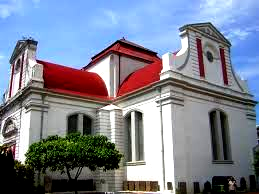
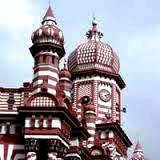
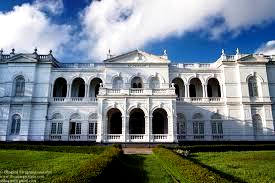
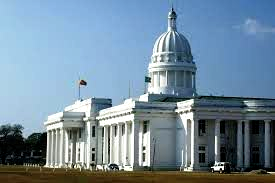
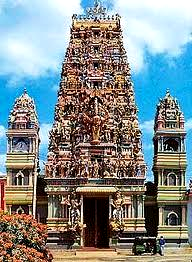
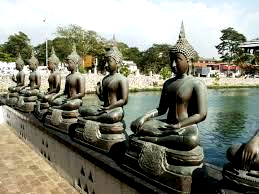
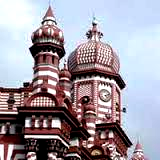
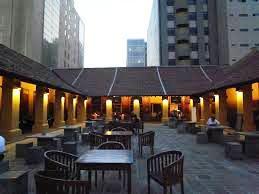

Latest Independence Arcade Mall – one of many salvaged colonial buildings
Shopping of traditional produce of Sri Lanka unique to the island at Barefoot galleries and Paradise Road!
Latest one-stop shopping mall at Shagri La, ONE GALLE FACE.
Dinner and Overnight at Cinnamon Grand Hotel, Colombo.
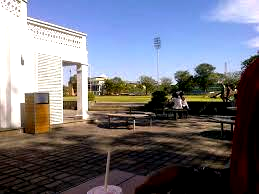
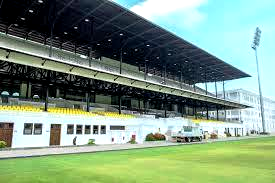
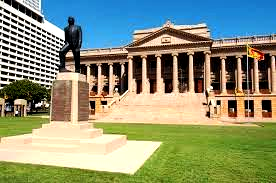
We leave for the Airport on the expressway in time for our flight.
……………………………….. End of Tour of Sri Lanka ……………………………………
